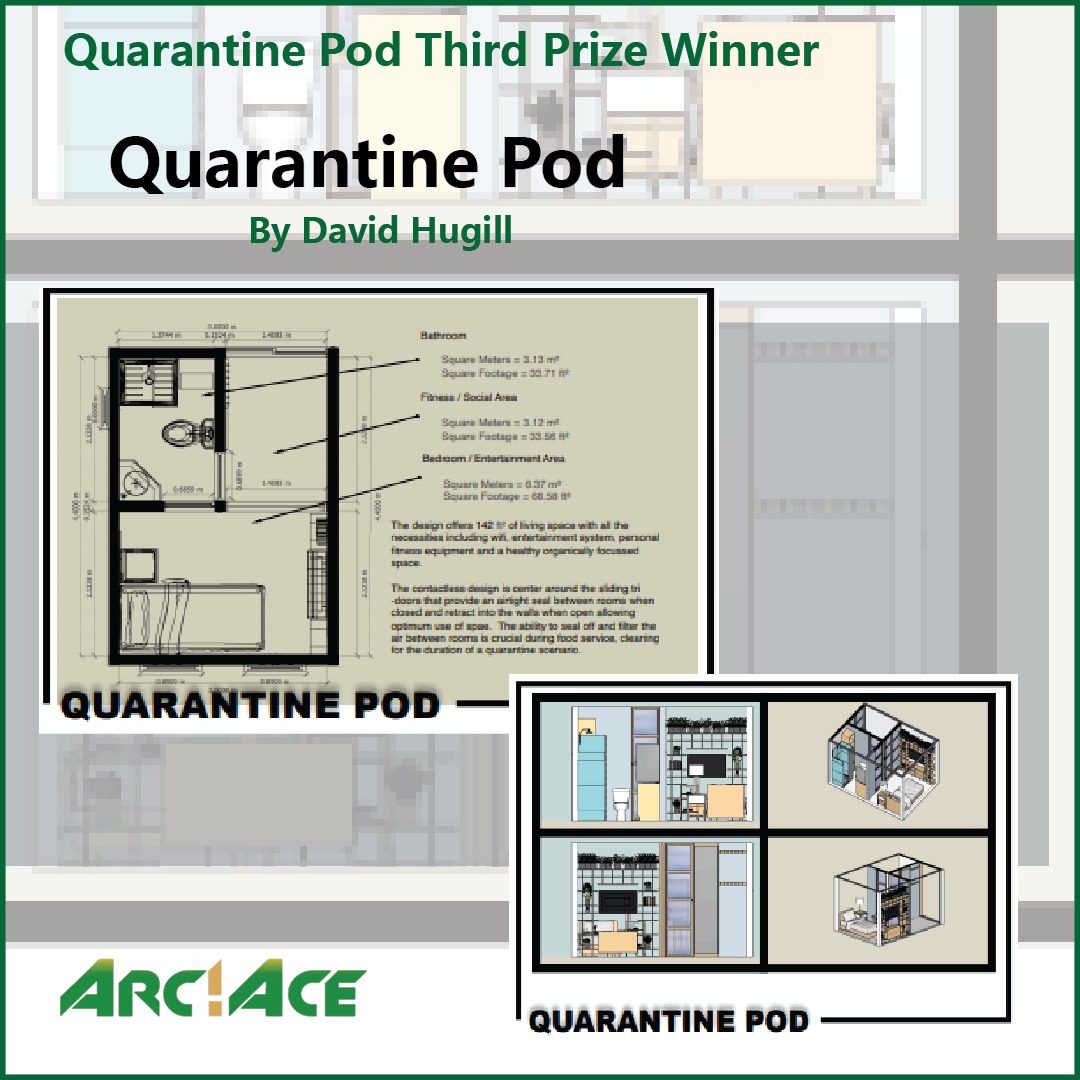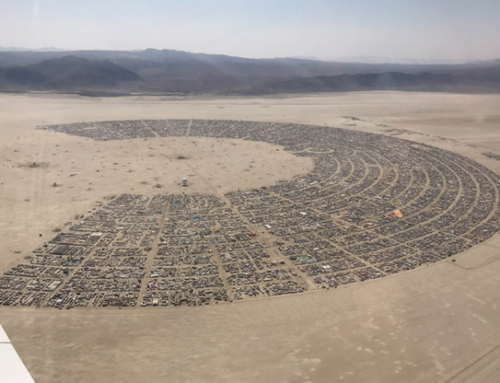ArcAce announces the Quarantine Pod competition’s first five winners.
“This is a very challenging competition in a pandemic setting. The design requirements demanded face-to-face communication between the virus holder with his/her family, that’s in addition to the need to be entertained. All of this must happen in a very small bedroom, facing a living room from the entrance side. More importantly, the pod should be designed to prevent the spread of the virus while providing a healing environment.
We were so impressed by the number of participants and the quality of the submissions.
The first winner exceeded our expectations, providing the most amount of virus prevention through double doors with airlocks on different levels. Also, it provides such a calming and healthy air environment. They went further by providing different settings to enhance the life of the sick while in a social bubble. The submission also impressively included construction details.
Congrats for such design ability to see and bring solutions to every aspect related to this pod and the dedication to bring such details on paper.” – Amal Wasfi (ArcAce Founder)
- The winners of the first-place prize: Fatemeh Heidari, Bahar Saebi Safa, and Negar Soleiman. Architecture students at Shariaty University, Tehran, Iran.

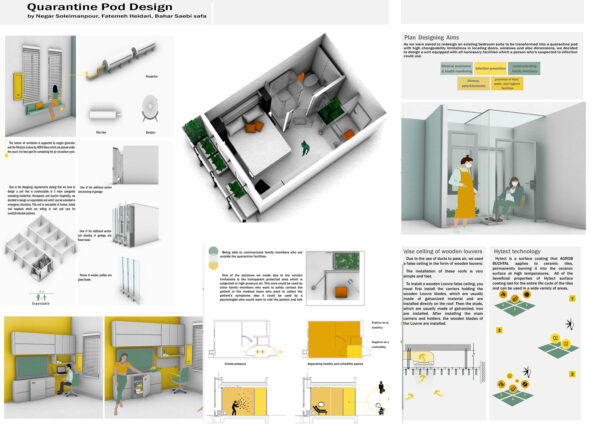
“The result was the design of a quarantine facility suitable for people who needed to improve their physical and mental condition. They are connected to the outside world and have access to all the media and facilities they need. It was possible to visit family or doctor by designing an air-lock space. It is designed with materials that need low construction time, are portable, and are removable, which also requires low manpower. Even the details such as the use of plants to produce oxygen have been used. And in general, we have tried to meet all the requirements.
“One of the most important points in infection prevention is the waste management which may cause dangerous situations for other people who are in close contact with it. So due to the World Health Organization (WHO) warnings, we decided to design a completely automatic garbage system which is eventually emptied into a pit outdoors. And this pit stores the infected garbage for 72 hours out of the way and after 3 days it can be disposed of with the general household waste.” – Fatemeh, Negar, and Bahar
2. The winners of the second-place prize: Maria Isabel Quiroz Roca, and Xinzhao Li, students completing Bachelor of Science in Architecture, McGill University, Quebec, Canada
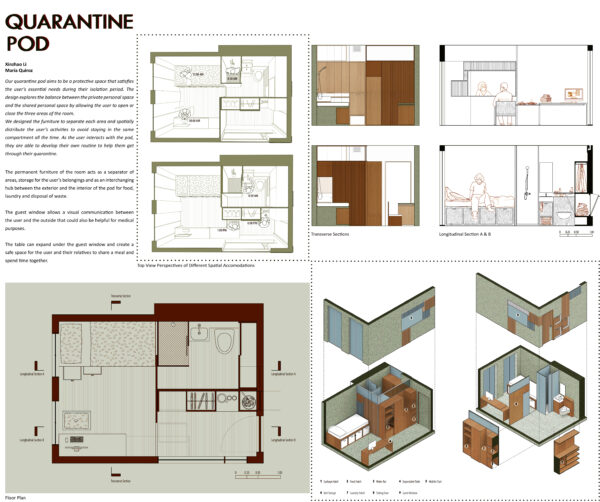
“Our quarantine pod aims to be a protective space that satisfies the user’s essential needs during their isolation period. The design explores the balance between the private personal space and the shared personal space by allowing the user to open or close the three areas of the room. We designed the furniture to separate each area and spatially distribute the user’s activities to avoid staying in the same compartment all the time. As the user interacts with the pod, they are able to develop their own routine to help them get through their quarantine
The permanent furniture of the room acts as a separator of areas, storage for the user’s belongings, and as an interchanging hub between the exterior and the interior of the pod for food, laundry, and disposal of waste. The guest window allows visual communication between the user and the outside that could also be helpful for medical purposes. The table can expand under the guest window and create a safe space for the user and their relatives to share a meal and spend time together” – Xinzhao and Maria
3. The winner of the third-place prize: David Hugill He is currently working through a 3D Design certificate at Emily Carr University and has almost completed a diploma in Organic Landscape Management through Royal Roads University.
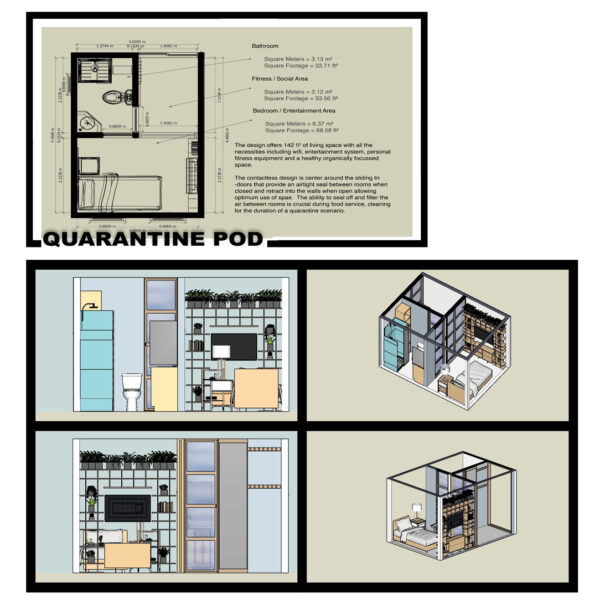
His ultimate goal is helping to solve wicked problems by designing creative, living, solutions that are environmentally responsible, aesthetically appealing, and functionally sound. David is from Vancouver, British Columbia, Canada.
“The design offers 142 ft² of living space with all the necessities including wifi, entertainment system, personal fitness equipment, and a healthy organically focused space. The contactless design is centered around the sliding tri -doors that provide an airtight seal between rooms when closed and retract into the walls when open allowing optimum use of space. The ability to seal off and filter the air between rooms is crucial during food service, cleaning for the duration of a quarantine scenario” – David
4. Honourable mention: Rosmi George, and Jisna Thomas, Bachelor students from SCMS School of Architecture, Kerala, India.

“QUARANTINE is a stage in which a person is needed to be separated from others as he/she has close contact with an infected person or having the disease. This can also be called a stage in which a person needed need more care, help, rest as he/she depends on someone or something.
Using photocatalyst cleaners: Air purifiers will use ultraviolet light in combination with catalysts to create chemical reactions that oxidize bacteria, viruses, molds, odors, volatile organic compounds into harmless byproducts. This can be done during the night.
Different kinds of houseplants can purify the air and they are the best medium to counter the pollution indoors, especially if you are dealing with respiratory illnesses. Some varieties of houseplants require very little or indirect sunlight. According to a study conducted by NASA, houseplants can purify and rejuvenate air within our houses and workplaces.” – Rosmi, and Jisna
5. Honourable Mention: Kiah Kennedy Completed a Bachelor of Art from the University of British Columbia, Vancouver, British Columbia, Canada.
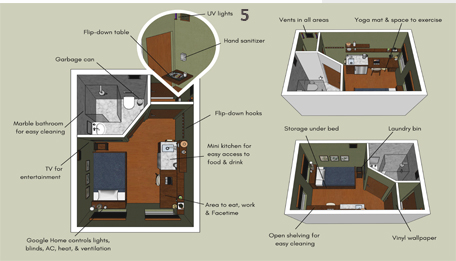
“The Quarantine Pod is a calming space, focused on the mental and physical well-being of the occupant. The twin bed features drawers underneath for clothing storage and faces a TV for entertainment. A small kitchen provides a space for snacks and drinks. The attached desk can be used for working, Facetime with family, or enjoying meals. Open shelving provides quick access, easy cleaning, and gives the room more breathing space.
The bathroom is small but well equipped, with easy-to-clean marble tile. The entryway provides a space to leave, or pick up items with a flip-down table perfect for putting a food tray on. When the doors are closed, UV lights can be activated to sanitize the contents ensuring that germs never leave the pod.” – Kiah


